
Dhok forest commonly known as an Anogeissus pendula (Family Combretaceae) which is the major biomass producer about 90% of this Tiger Reserve. It is a deciduous tree with newborn leaves in June-July. Leaves turn reddish brown or copper brown in November-December and start shedding in January.Flowering starts in September-October. Fruits ripen in December-February shed in March-April.
Dhok is considered drought tolerant and third toughestwood of the world and produces energy rich charcoal.
Dhok is an important durable timber for cart-axles,s, frames.Green leaves/dropped leaves are used as fodder by chital and sambar during the pinch period. Tree is also used as fuel for with the high caloric value 4800 calories.
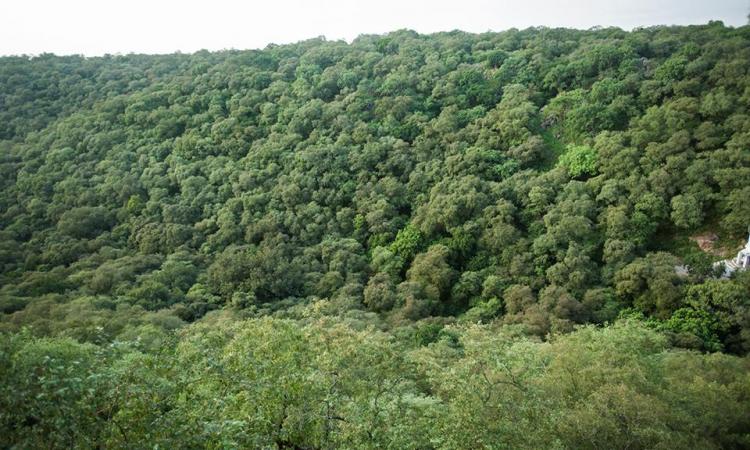

Just as humans combat mineral deficiencies by ingesting milk, vegetables, fruits, etc., There are plenty of reservoir of salt mixed with soil-to provide the ungulates with minerals.
If you are lucky one , you might see the chital/sambar scraping the soil with its incisors and licking it with its tongue. These artificial saltlicks are maintained by the forest department as a buffer to the natural saltlicks gifted by nature.
You all must have eaten 'ber’ from the market. These are plucked from this tree. The leaves of Ber (Zizyphus Mauritiana) are high nutritious fodder for the ungulates (herbivores) especially the chital and the sambar. Ber is a spiny shrub to a small tree with spreading crown and drooping branches. Bark dark grey and furrowed. Leaves dark green, egg-shaped-oblong to half circular. Leaves fall in Mar-Apr, new leaves appear at the same time. Fruits ripen in Oct-Mar.
When Langurs fees in a tree, chital frequently crowd beneath it and pick up the leaves and fruits dropped by these Langurs, an association noted by Champion (1927). Langur eat rather selectively and the other parts are discarded and immediately eaten up by the waiting chital below. A similar Peacock-Chital association can also be seen in Sariska.
If you are patient and quiet, you might very well see this wonderful animal behaviour of chital-langur / chital-peacock association.
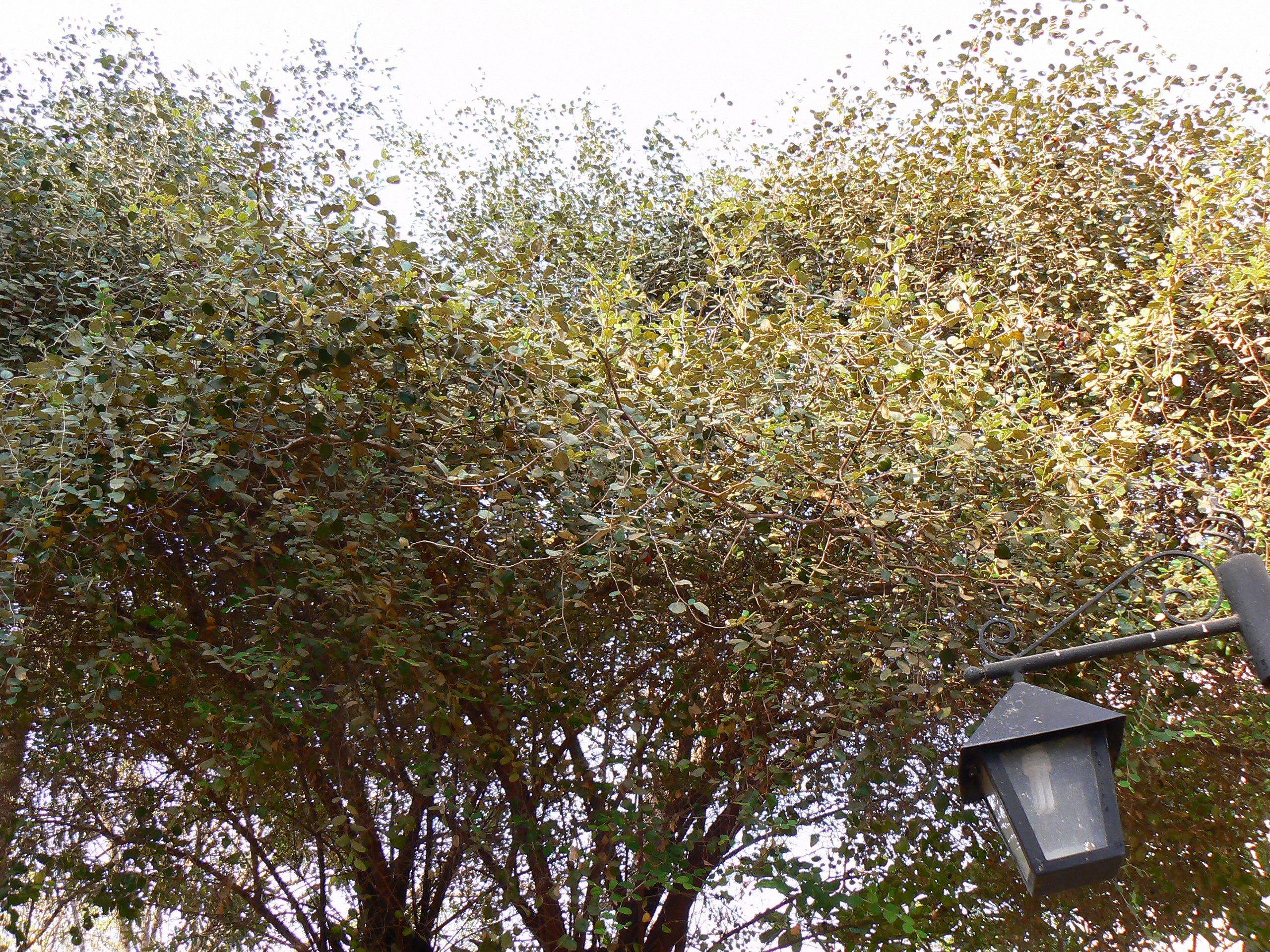
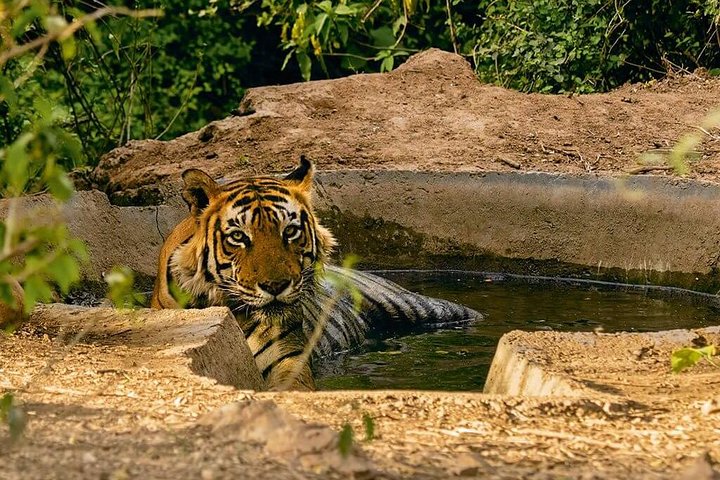
You must be wondering what is there to see in the muddy swallow depression. This is a wallow-spot. Sambar stags (male sambar) digs out the wallows by jabbing either their brow tine (tips of antlers) into the mud and then jerking up the heads so vigorously that in some instances, the earth flies several feet into the air. These actions create a muddy depression with a pool of water in the middle, in which the stag lies down. This is a typical sexual activity when the stag is in rut (in mating phase) from Nov-Jan. If you are lucky and patient, you might see the stag with its body caked in mud.
The scratch on this tree is not done by any human or any insect. It is a rub of the antlers of the chital or the sambar. Bucks (male deer) begin to rub their antlers against trunks and shrubs when the velvet begins to dry and they continue to do so until the antlers are shed. After shedding, a new growth of the antler takes place which is initially soft and covered by a layer of vascular skin with a coat of fine hair termed as velvet. As the antler grows, the velvet begins to dry and later forms a hard antler with the tip being creamy white which coincides with the peak of the rut. (Sexual phase) Sometimes this rubbing of the antlers is vigorous, the antlers clanking noisily but at other times the buck does it gently by wiping his face, forehead, antlers and neck over the bark.
Taxonomically named Capparis sepiaria, locally known as Heensjal. Capparis sepiaria is evergreen produces some new shoots and leaf growth at all times of the year. Leaf, flower and young shoots are eaten by chital, sambar and nilgai throughout the year, specially during the leanseason when grasses are dry and absent. The sharp curved thorns in the branches of Capparis prevent its utilisation by the cattle, thereby helping the herbivores to survive. Observations of feeding habits of wild herbivores in Sariska show its general value as a browse plant, specially in drought period.
We humans need an architect to design our houses but the beaks and the limbs of the weaver birds make them the most innovative architect of nature. Those pendulous closed pear shaped basket hanging from the branches and twigs are the nest woven by small sparrow like birds or the baya. The male weaver build the most intricately, globular nest with a long entrance tube at the bottom, suspended from a branch. Fabricated from grass strands or strips of palm leaf, these nest hang in colonies of 8-10 sometimes even 50-200 nest in a single tree.
The male weaves the next with patience to win a wife but it may not be an easy task.
You may find some half built nest also they are the ones which have been rejected by the better half. The male goes on building the nest till one is accepted by the female you may be fortunate to spot a cute little bird building and nest on feeding its young ones.
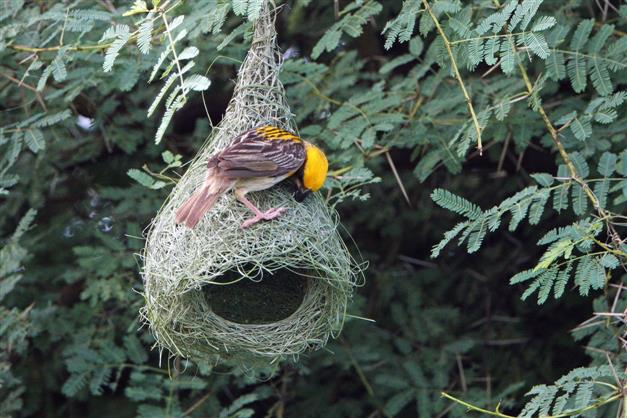
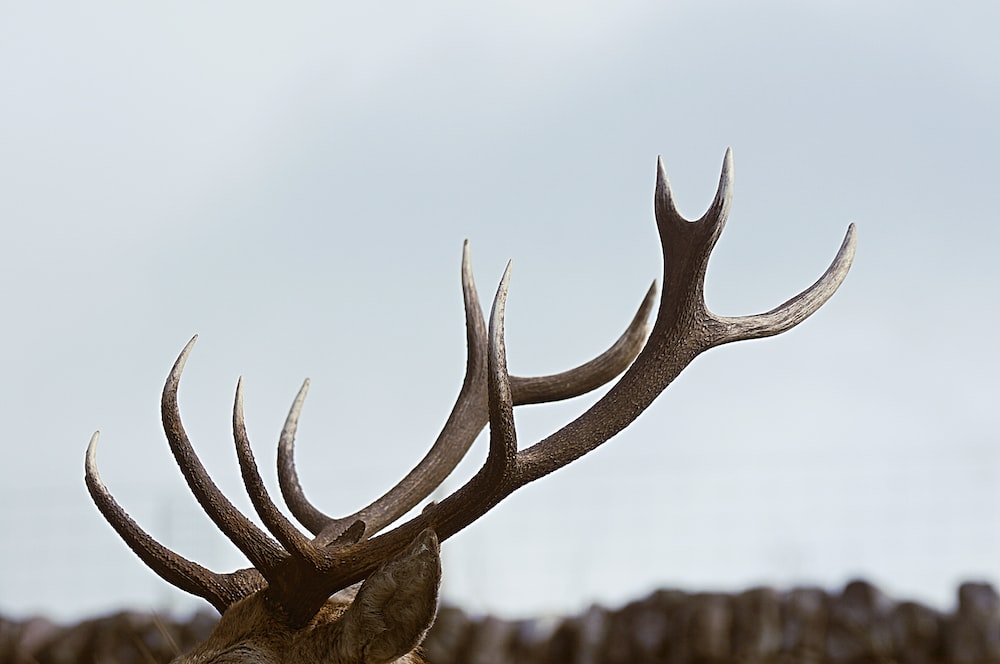
Get educated to the difference between an antler and horn, commonly called by you as horn (seeng) but scientificallyincorrect.
The tiger/leopard’s paw consist of a pad and four toes. A fifth toe, which corresponds to the human thumb is held higher on the limb and does not make any impression on the ground. The leading toe in a plaster cast is a ready means of finding whether it is an impression of the left or right foot.
Termites are social insects.Their swarm consists of a ruling Queen, a king, soldiers and workers.They live within subterranean galleries or in huge protruding mounds. The mounds are like a castle with outer walls, inner walls and many chambers which are used for different purposes. In some high developed termite app. The mould are built in such a way that the air conditioning engineers would envy them. Temperature within the mound remain lower than the outside temperature. And temperature in the various chambers also vary.
Thermites form essential links in the natural system by helping the process of nutrient cycling. Termites convert the cellulose into sugars on which the microbes act and return the nutrients to the soil. Termites are important sources of food to birds and animals too.
Ever wondered that the katha you or your panwala used in your betel leaf (pan) last time, has been obtained from the heartwood of this tree called as Khair Tree (Acacia catechu).
Acacia catechu is a moderate sized deciduous tree with a feathery crown and branches armed with twin hooked prickles. Tree coppices well and produces root suckers where the roots are exposed. Bark is thick grey or greyish brown in long narrow strips, heartwood dark or light red very hard and durable.
Acacia catechu is a hardy, draught, frost, resistant and moderately fire resistant tree. Heartwood, locally utilised for poles etc heartwood is rich in catechin, cutch and kuth are obtained by boiling down chips of the heartwood to yield the Katha.
Tendu Tree (Diospyrous melanoxylon) is source of beedi leaves all over India.
It is a moderate size tree, occasionallya large tree, with greyish black bark in regular rectangular scales resembling the crocodiles skin. Tree is leafless for a short time in hot season and is frequently never quite leafless. Leaves are leathery, elliptic egg-shaped. Flower appear from Apr-June and fruits ripen from Apr-June.
Leaves are used for beedi manufacturing and high source of revenue to the labourers in the pinch period. The leaves are collected by hand plucking in March-April, the wood is used for building shafts, shoulder poles, fancy articles Etc.